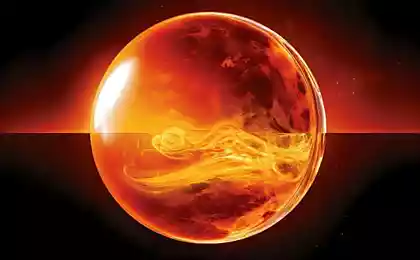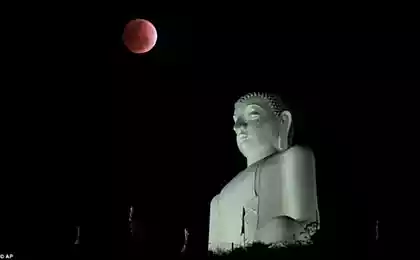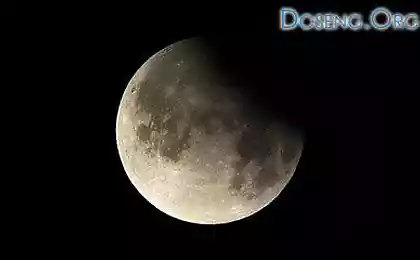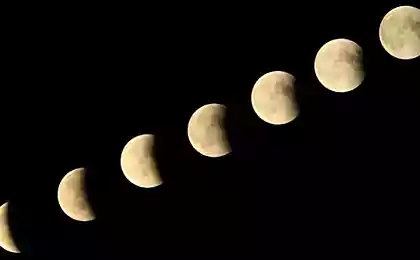966
Total lunar eclipse early morning of September 28
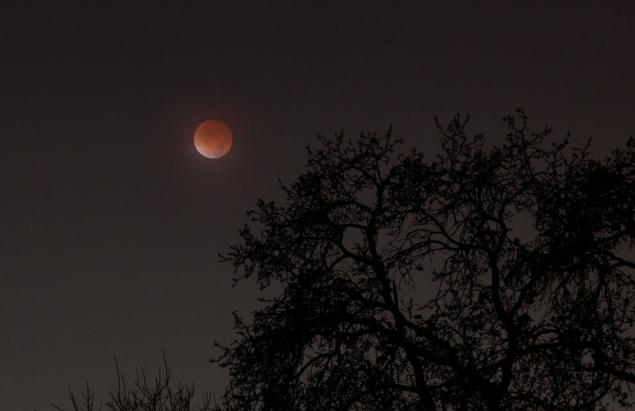
Today the Moon is in a phase of the first quarter, and it remains to make only a quarter turn of the orbit to the встречи Earth's shadow cone . Partial eclipse will September 28 in 4:07:11 in Moscow, and the total phase - in the 5:11:10 5:47:07 is already on the bright sky shortly before dawn. Unfortunately, in Moscow, when coming out of the shadows not visible - in half an hour after the maximum moon disappears behind the horizon and the sun rises.
Early Monday morning - not the most convenient time, and the visibility of the total phase far from ideal (the height of the Moon less than 10 degrees). Nevertheless, I still advise to look at this phenomenon for the following reasons:
This eclipse will coincide with the суперлунием and the moon will be a little larger than usual, and the proximity to the horizon will further enhance the effect (see. иллюзия Moon ). The next total lunar eclipse visible in the European part of Russia will only July 27, 2018 < / a>. Note. These times are valid for any observer's location, adjusted for time zone. Will vary only the position of the moon in the sky. Unfortunately, for many of our compatriots (for example, Siberians), the eclipse will happen after moonset. Visibility conditions described here are valid for Muscovites and residents of neighboring areas. I>
If your screen goes to the west or southwest, and an overview of the horizon does not cover the house and trees, then you are lucky and you can watch the eclipse without leaving home. Otherwise it is necessary to find a suitable site for observation. The sky to the west should look to the height of at least 5 degrees, otherwise you will not see the full phase. For the rest of the week to eclipse the sun will be in our desired region of the sky around 17:20 (± 5 min). Use this fact to check whether you can see the complete phase with the chosen place - it should be lit by solar rays.
If you have a camera with a telephoto lens, take it with you. When taking partial phases can be dispensed without a tripod, but for the total phase is better to fix the camera - the lunar disc is badly darkened and require more exposure.
Penumbral eclipse phase will begin in 3:11:47 , but you vryatli will see some changes to the naked eye. But if somewhere in half an hour you are taking a picture of the moon, you will see in the photo that the full moon disc unevenly lit - the left edge darker. This is due to the fact that an observer on the moon at that moment the sun is already partially covered by earth, and the degree of closure varies for different points on the surface. By the way, a picture of the full moon before the penumbral phase will be interesting because it will maximize the full moon that can be photographed from Earth (usually one end of the full moon the moon is slightly dented, see. ).
Shortly before the beginning of the partial eclipse slight darkening of the upper left edge of the lunar disk will be a noticeable eye.
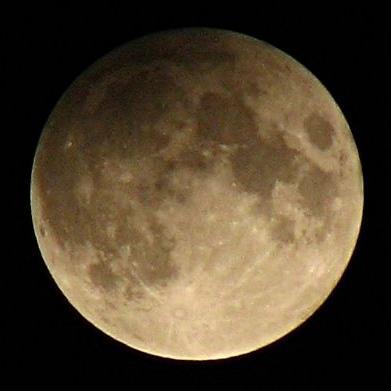
Then the moon suddenly lose a perfectly round shape - will private phase. The position of the moon among the stars of the constellation of Pisces at the time of touching the shadows:
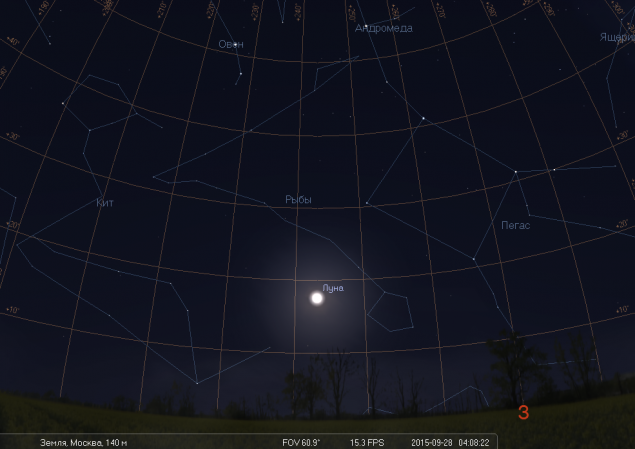
Around 4:45 Earth's shadow will cover half of the lunar disk. The moon at that time drops to 13º above the horizon.
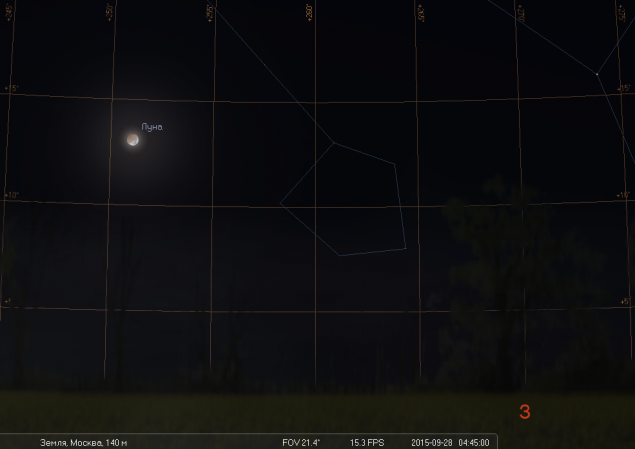
During a private phase, brightness shaded and light parts of the disc are very different. The eye sees both sides of the well, but the camera does not have enough dynamic range for the rest of the moon. You can try to make the HDR-image:
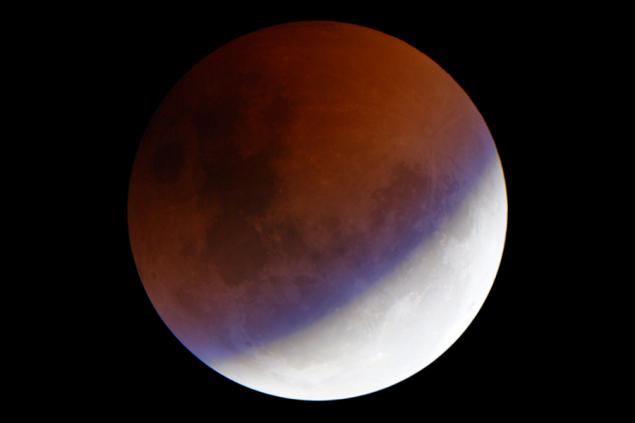
Start of full phase, the height of a little less than 10º:
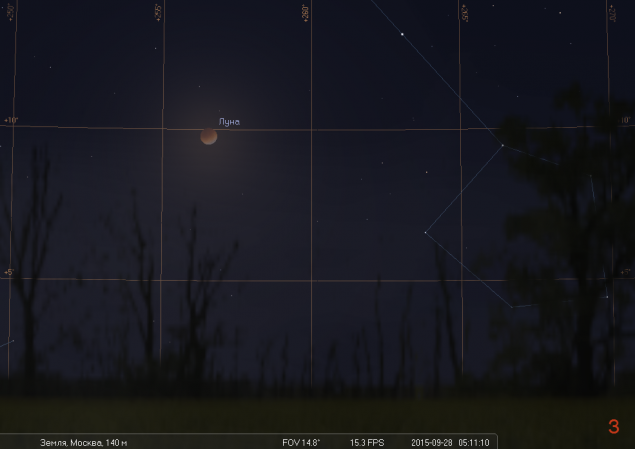
Maximum. Already dawns, the sun in only 5º below the horizon, and the moon in 5º above - at the time of the lunar eclipse, they are diametrically opposed points of the celestial sphere (corrected for refraction and the finite size of the shadow).
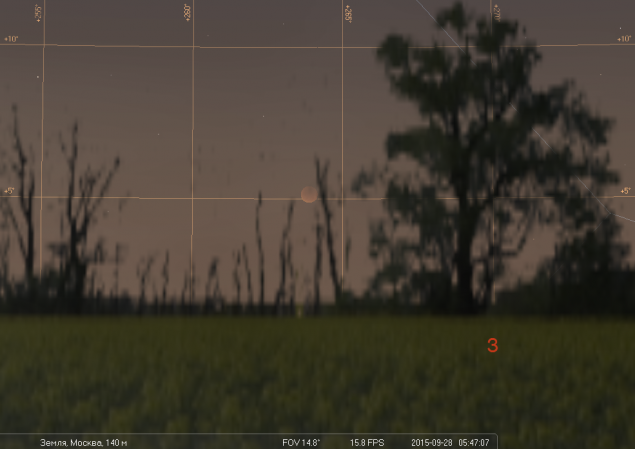
North Pole of the Moon will appear darker because the closer to the center will pass the Earth's shadow.
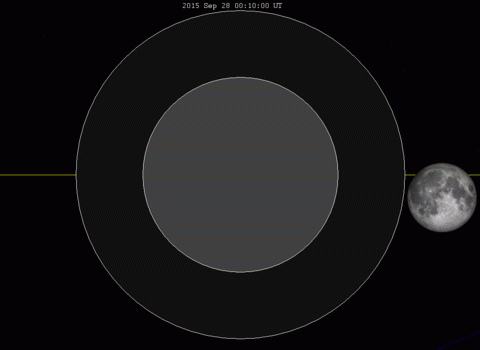
Red Moon during totality is due to the same reasons for which we see a red dawn after sunset (see. ).
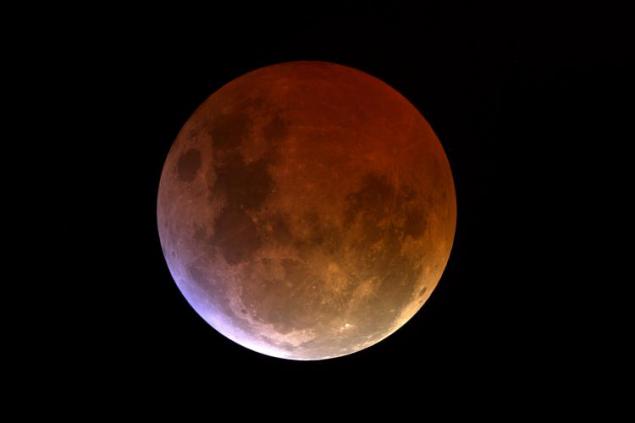
An observer on the moon as it sees the dawn while the entire circumference of the earth disk.
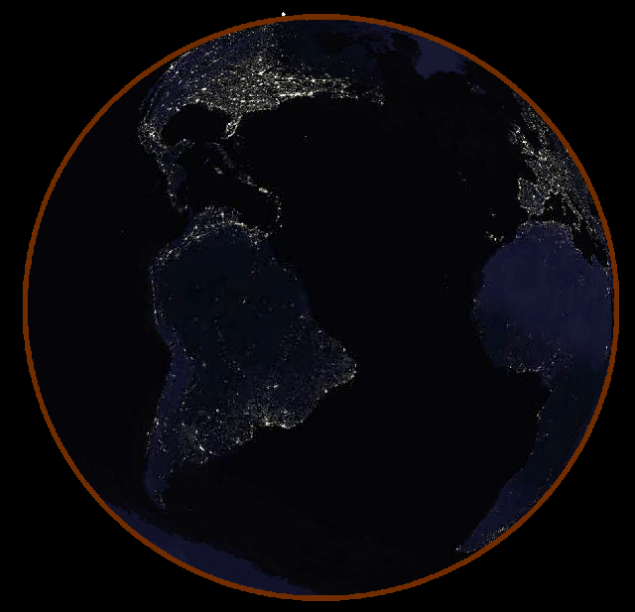
This model is taken from an article in Wikipedia is very rough - exaggerated glow of cities on the night side, and the ring of the morning should not be so uniformly colored. The only real picture of the Earth from the surface of the moon during a lunar eclipse made machine in 1967:
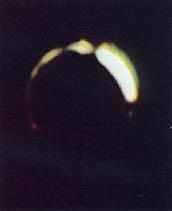
Uneven width of the ring is linked to the difference in weather conditions and the state of the atmosphere.
This picture was taken a team of , but not on the surface, and on the way home:
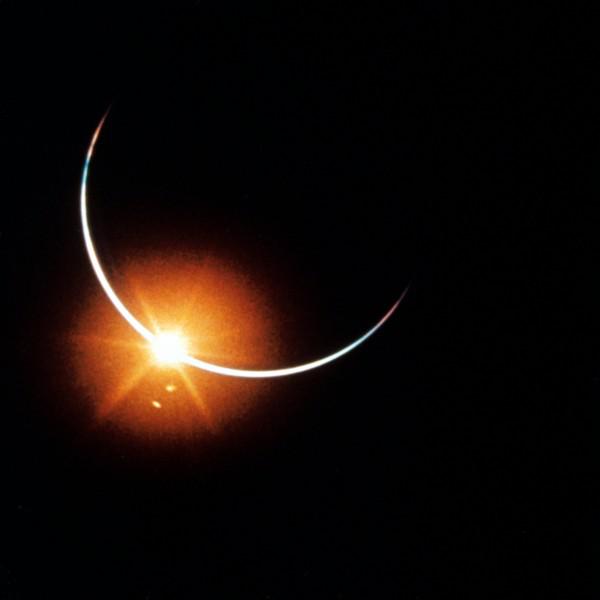
A Japanese probe Kaguya even made video Earthrise over the north pole of the moon during an eclipse . Video shot not from the surface, and with a polar lunar orbit.
This eclipse was visible from Earth as the penumbral Moon was barely touched the shadow of its northern side. Kaguya was in polar orbit and still went through a shadow flying over the North Pole of the Moon.
It is interesting that a week ago (ie in polvitka up for the upcoming eclipse) there was a partial solar eclipse visible in southern Africa and parts of Antarctica. Spacecraft (Solar Dynamics Observatory, the Solar Dynamics Observatory) lucky enough to be close to a straight line passing directly through the three celestial bodies - the sun, moon and Earth (in order of distance from the machine). The result here is a rare shot double solar eclipse i> shot in the far ultraviolet:
The moon has no atmosphere and the edge of her disc (pictured left) is sharp. The Earth's atmosphere leads to a blurring of the limb of the Earth (dark arc at the top).
Sun Eclipses other planets have an atmosphere of Cnimok made from the shadow of Pluto unit :
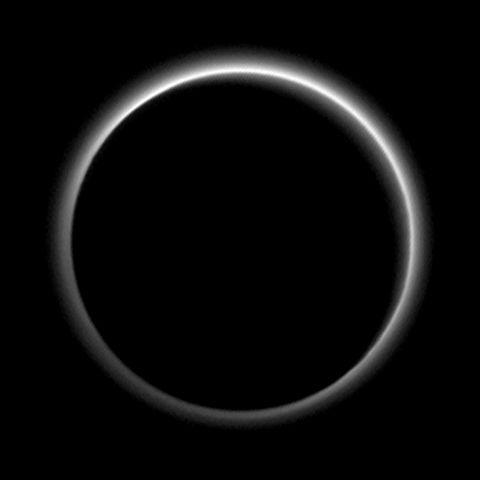
In the photo album have here is a magnificent picture:
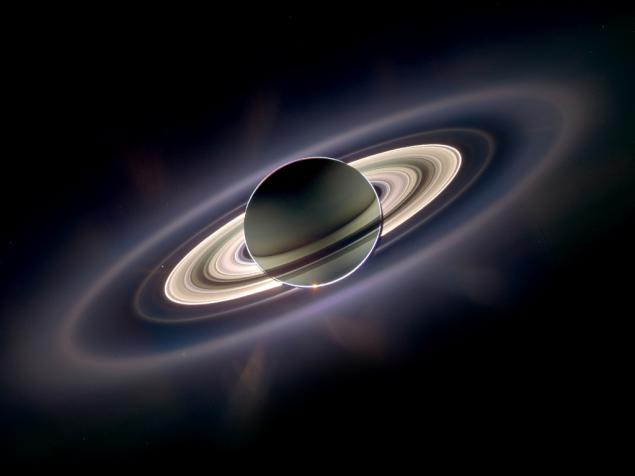
Point to the left of the Rings - the Earth. i>
Returning to the theme of the upcoming eclipse observations from Earth. If you have a telescope, try to inspect as large as the moon's surface covered with a shadow - there is a rare chance to discover the so-called . During a lunar eclipse is very sharp temperature drops a hot day of the lunar surface. Due to mechanical stress in the rocks may be an electric field causes ionization and glow. Most of these phenomena are observed in the crater . Will you watch the eclipse? This is still better to sleep off the working week. 'll go back later and see. I will get up early and take a look. I wake up, have a look, and then sleep. Voted 207 people. 54 people abstained. Did you know about the upcoming eclipse before reading this article? No. I have heard something, but did not know the exact time and visibility conditions. already knew when and where to watch. Voted 282 people. 12 people abstained. Only registered users can participate in the survey. , please.
Source:
Electric car Tesla Model X will be presented September 29
Animated video exoplanets rotating around its star







